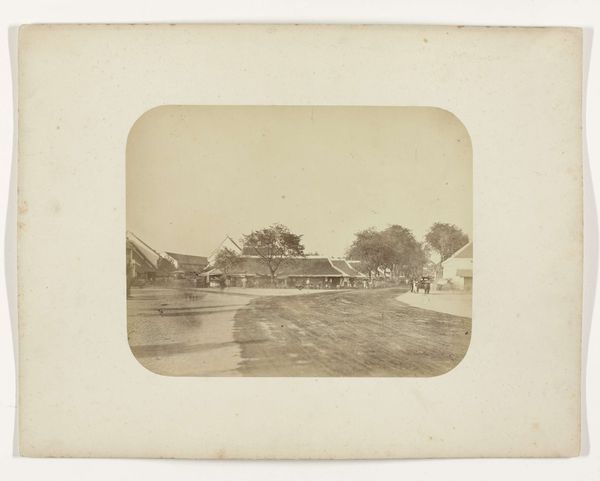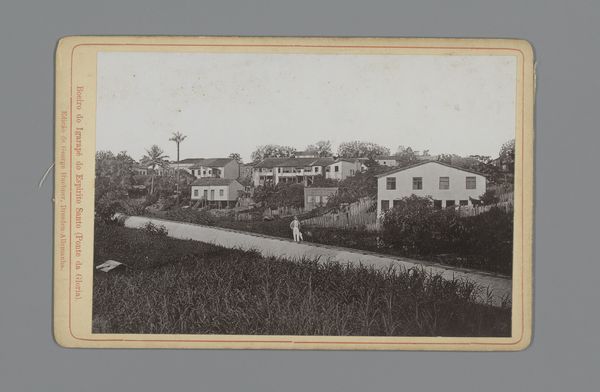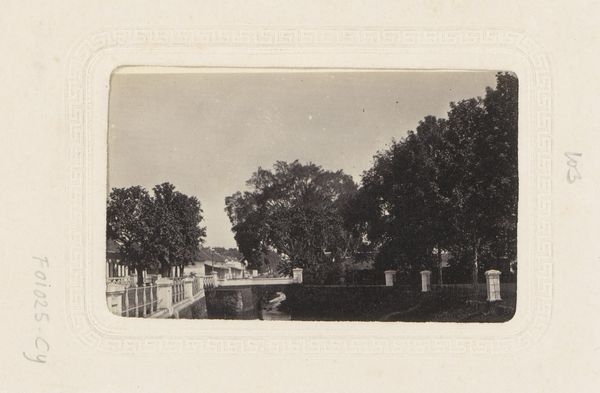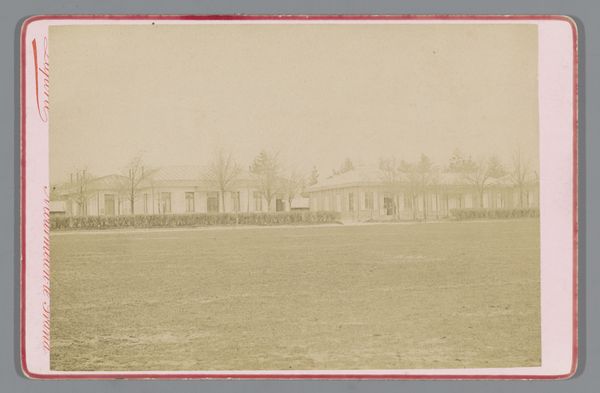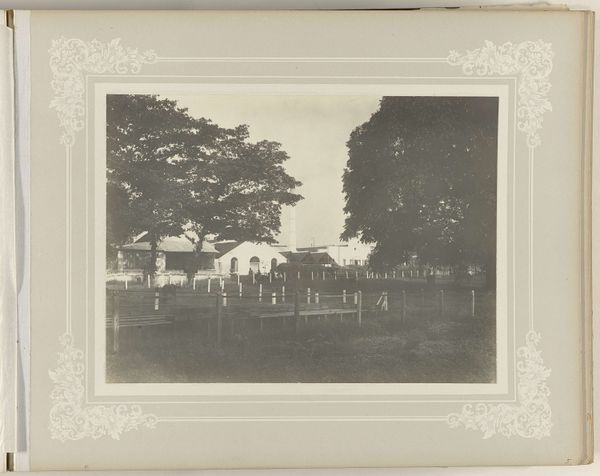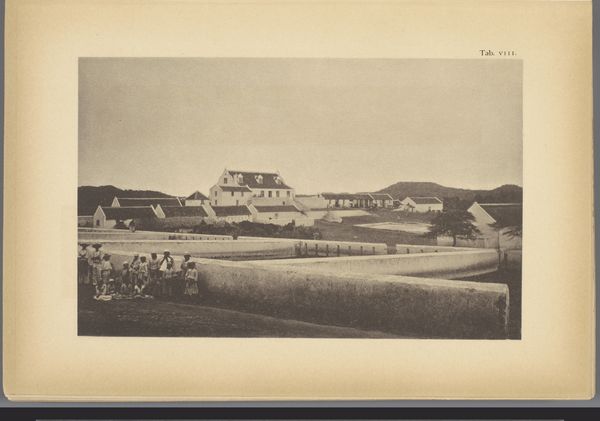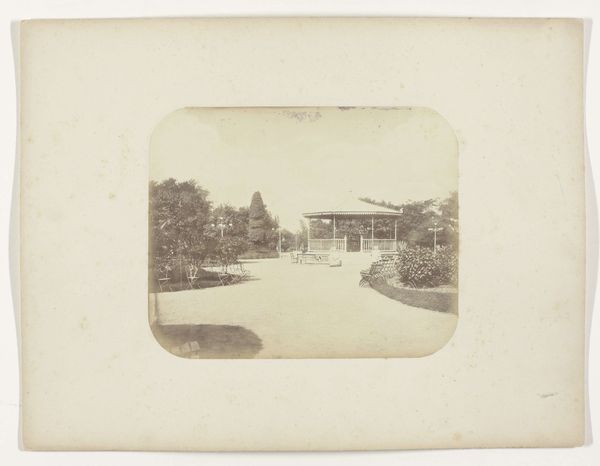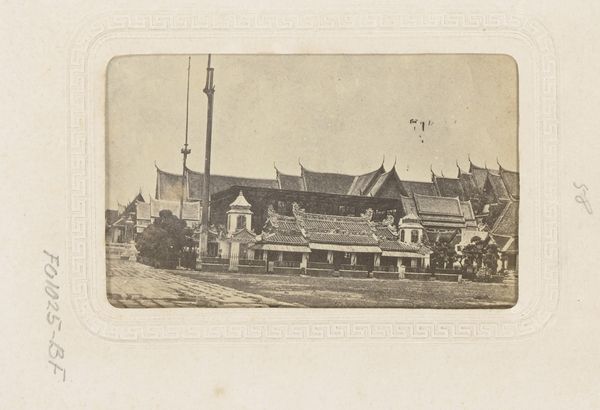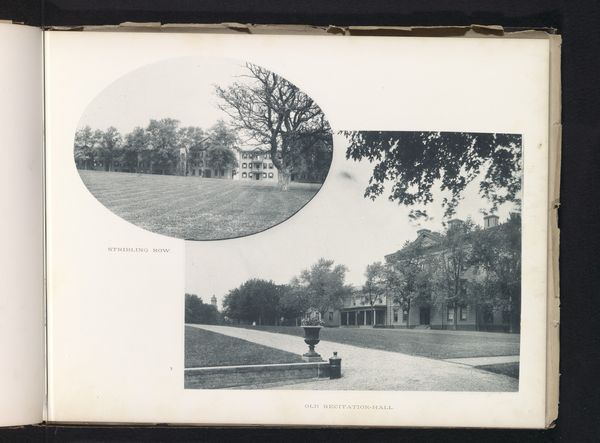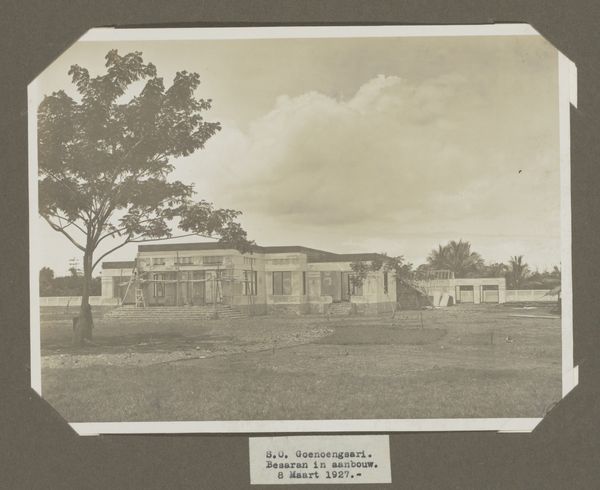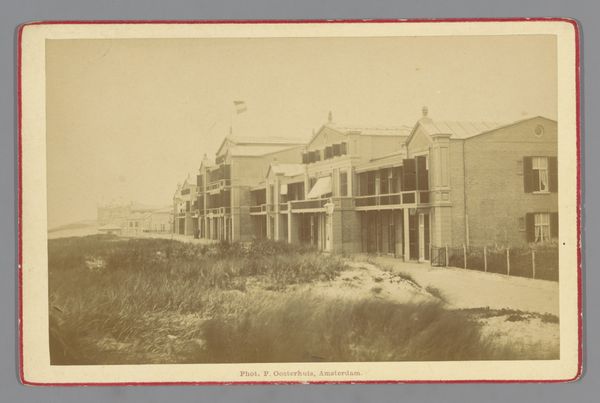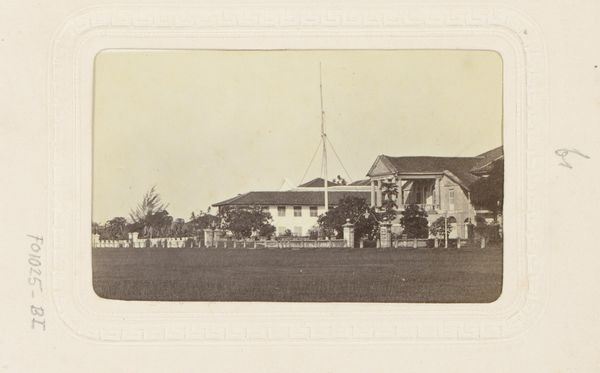
photography, gelatin-silver-print
#
16_19th-century
#
landscape
#
photography
#
orientalism
#
gelatin-silver-print
#
cityscape
Dimensions: height 85 mm, height 52 mm
Copyright: Rijks Museum: Open Domain
Curator: I'm struck by the stillness. It feels like a held breath, captured in shades of sepia. Editor: That's precisely the mood that permeates this 1867-1880 gelatin-silver print by G.R. Lambert & Co., titled "Gezicht op de haven van Singapore." We see here a carefully composed view of Singapore harbor, presented as a product for Western consumption, reflecting the Orientalist movement. Curator: Orientalism... right. I always find that term a bit tricky. Looking at this image, the ordered composition makes me wonder about the staging, the implied European perspective doing its thing. I feel like the picture smooths over the messy, chaotic reality of a port. Editor: Exactly. The gelatin-silver printing process itself involved layering collodion emulsions and silver nitrate on glass plates. Its proliferation aided in disseminating colonial imagery, sanitizing it in the way you mention to promote commerce and solidify imperial narratives back home. Curator: It does make one ponder who the intended audience was. This is like a flattened memory, you know? A very intentional selection of what to present—almost a postcard of imposed order and exotic allure for an empire that never sleeps. Editor: We have to consider this as labor, too: preparing the chemicals, developing the print in a darkroom under challenging climatic conditions, shipping the materials – this image emerges from considerable logistical efforts. Curator: You make me consider the invisible hands. So many individuals and labor went into it! Beyond those, though, the enduring pull of images to capture, package, and, honestly, to somewhat control our experience of a place. Even through a lens faded with time, it remains poignant and perplexing. Editor: Absolutely, from the photographer, to the subject, the darkroom assistants and eventually the consumer—every part contributes to the historical artifact and helps expose colonialism. Hopefully we've shone light on just a bit more to encourage curiosity, haven't we? Curator: Indeed.
Comments
No comments
Be the first to comment and join the conversation on the ultimate creative platform.
